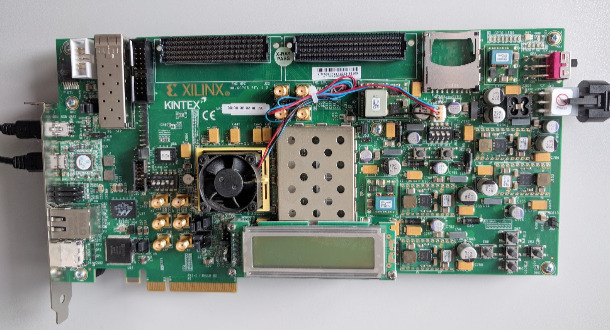
Microchips are the central components that make up all modern computers. We encounter them not only in the form of processors in PCs, where we work, write, and surf, but they are also found in washing machines, refrigerators, and cars. Without them, most everyday devices would either not function at all or operate in a limited capacity. Therefore, the constant development and advancement of application-specific microchips have a direct impact on our lives. Microchips built exclusively for a specific task are called Application-Specific Integrated Circuits (ASICs). They consist of tiny, simple building blocks interconnected in a small space, capable of executing complex functions when working together. Their strength lies in being small, fast, reliable, and requiring minimal power to operate. However, a drawback is that once built, they cannot be altered: Once a microchip is soldered or etched onto a circuit board, it performs the same function consistently. To add new features or make changes or improvements, the entire chip must be rebuilt, which is not only laborious but also expensive.
In research, it would be practical to leverage the positive properties of microchips, as their high speed allows for effective data processing and quick execution of procedures. However, since these procedures are still in development, it is financially and temporally impractical to build a new microchip for every small change a researcher wants to try out. Therefore, the development of these procedures primarily takes place on ordinary computers, which are somewhat slower and consume much more power, as the processor has to control the entire user interface and many background processes.
FPGAs – A genuine alternative
A promising alternative to ASICs is Field-Programmable Gate Arrays (FPGAs). These are a special type of microchips designed so that their components are not “set in stone” but can be reconfigured repeatedly in different ways. Researchers can create a circuit diagram similar to the one underlying a real ASIC. However, instead of building a real ASIC, they can simply load it onto an FPGA, which then immediately executes the described circuit. This makes it possible to continuously improve circuit diagrams and test them repeatedly without much effort. This approach is not only much faster than building multiple versions of an ASIC but also conserves environmental resources and is cost-effective.
FPGAs are also suitable for direct use instead of ASICs: If an FPGA is installed in a car, for example, it is possible to load updates and improvements, such as new versions of driver assistance systems, onto the FPGA afterward without having to completely replace the hardware. This property is what gives the FPGA its name, with “field-programmable” indicating that it can be programmed in the field, meaning in the final application area.

This is an FPGA board from the Kintex series by Xilinx. The actual FPGA is a square chip installed beneath the fan.
FPGAs for Machine Learning
FPGAs are already used in the automotive, video and audio processing, and medical fields. For Machine Learning, FPGAs with their performance and flexibility hold great potential. They can analyze measurements in real-time by classifying them with models like Artificial Neural Networks. Thanks to their low energy consumption, often below 1 watt, and high processing speed, they are particularly suitable for use directly where data is generated and where there is limited space or power available. They can also significantly accelerate procedures that are too slow on regular computers.
A researcher team at ML2R (now the Lamarr Institute) utilized the advantages provided by these benefits. The researchers developed an FPGA-based system that can solve a class of optimization problems (QUBO) quickly and with low resource consumption. Optimization problems form the basis of Machine Learning, where the goal is to find the best solution according to a defined criterion from many possible solutions. Due to the multitude of potential solutions that need to be searched, a regular computer or even a human would theoretically take thousands of years to solve it. By using FPGAs, it was possible to employ a specialized algorithm that can solve the QUBO problem and consume only 1.5 watts. The research team has thus developed a versatile tool that can accelerate numerous Machine Learning procedures.
Microchips and especially FPGAs provide an interesting platform for Machine Learning because they are fast, reliable, and energy efficient. Exploring methods that are small enough to fit on microchips yet fast and guaranteed to deliver correct and good results is an important area of focus for the competence center ML2R (now the Lamarr Institute). The integration of this technology into our daily lives helps to bring Machine Learning into our everyday devices and will continue to simplify our lives even further in the future.
More information can be found in the following publications:
Learning Bit by Bit: Extracting the Essence of Machine Learning
Sascha Mücke, Nico Piatkowski, Katharina Morik, Proceedings der Konferenz “Lernen, Wissen, Daten, Analysen” (LWDA), 2019 PDF.
